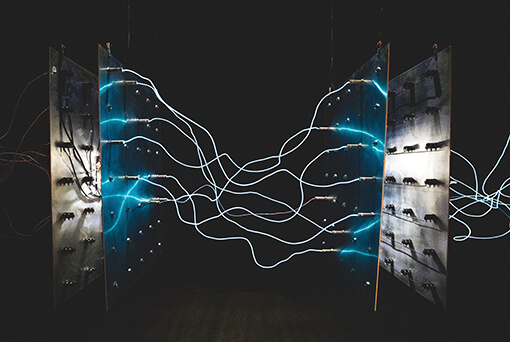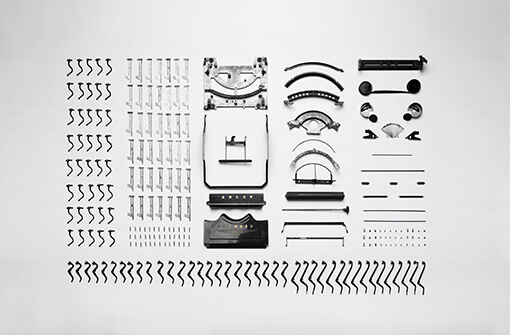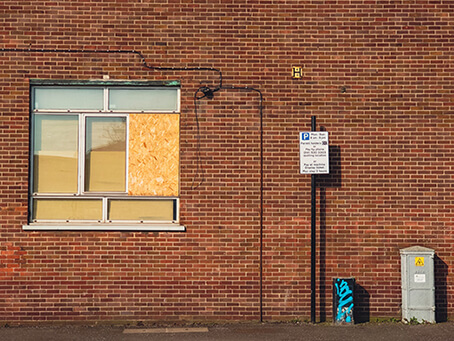Hi! It’s konkaz (@konkazuk) here.
Relative pronoun is an essential element for speaking in English.
However, I guess many of us often pretend as if we had not seen it once we have spotted the form of “preposition + relative pronoun” among its usage.

That’s terrible! At least I always try to guess and put something like “in”, “with” or whatever within a sentence!

Well, just guessing is not so different from not confronting the issue, is it?
Anyway, here, we are going to have a look at how prepositions are to be placed before relative pronouns, and when the form of “preposition + relative pronoun” is applied.
What is relative pronoun? (Once again!)

I know I’m repeating the same thing but let me explain what relative pronoun is once again.
The fact we need to know about English language at the first place is that…
its order to construct the sentence is fundamentally different from how it works with Japanese.
It kicks off with an independent clause that is going to be the core of the sentence,
just like…
“That’s the dog!”
Subsequently, you add information or explanation to the “noun” or the “object” in the independent clause, like…
“It has bitten my nose before.”

👉 “That’s the dog that has bitten my nose before.”
Here, if you place direct Japanese translation of this sentence (without changing the order of how it’s structured in English) by the side of its neatly translated version (with its order adjusted), you might be able to see the structural difference clearly.
Japanese
「あれが、以前わたしの鼻に噛みついたことがある犬だ。」
“That, before my nose has bitten the dog is.”
English
「あれがその犬だ。+ そいつは、以前わたしの鼻に噛みついたことがある。」
“That’s the dog that has bitten my nose before.”
Anyway, “relative pronoun” is the one that connects “the dog” in the independent clause with “it”, which is the pronoun for “the dog” in an independent clause, in the 2nd clause.
Therefore, as you can see, acquiring the usage of relative pronoun is unavoidable fact to be able to speak in English.
Preposition + relative pronoun

Anyway, before we proceed, here is good news for us.
There are several relative pronouns such as “who”, “whose”, “whom”, “that” and “what”,
but among these,
only “which” and “whom” are applied to the form of “preposition + relative pronoun”.
Sounds better, doesn’t it?
Well, let’s have a look.
preposition + “which”

First of all, “preposition” is just like a sign to introduce an “object”,
for example…
“in the box”, “at the station”, “to the hospital”, “on the bus”
And as you can see, they are placed before the “objects”.
The form of“preposition + object” is called“prepositional phrase” in English and“zenchishi-ku” in Japanese, and when you see this form, please take it as a group.
Anyway, let’s move on to some examples.
Example 1.
I watched a movie.
+
The main character killed himself in the end in the movie.
After kicking off with an independent clause “I watched a movie”, we are going to add some information about the movie, which is “The main character killed himself in the end”, to construct the whole sentence by using relative pronoun…
However, structurally, it looks a bit difficult to figure out how they are going to be combined into one sentence at this stage.
But, how about this one?
I watched a movie.
+
In the movie, the main character killed himself in the end.
Now, the phrase “in the movie” has been placed at the beginning with the 2nd sentence, so that the word “movie” can get close to each other.
Doesn’t it look easier for you to connect the 2nd sentence with an independent one?
The part “in the movie” is, by the way, the “prepositional phrase”, which was explained earlier.
Therefore, just like this, we bring “the movie” with the form of “prepositional phrase” to the beginning of the 2nd sentence in order to make it closer to the “movie”, which is an object of the 1st sentence (or the 1st-clause-to-be).
The rest is easy.
Relative pronoun “which” can be substituted for the “object” that is introduced by the preposition, so we simply replace “the movie” in “prepositional phrase” with “which”…
I watched a movie.
+
In which, the main character killed himself in the end.
👉 I watched a movie in which the main character killed himself in the end.
By the way, the clause that begins with relative pronoun (including the one that starts with preposition) is called “kankeishi-setsu” in Japanese and “relative clause” in English.

Let’s check with several more of examples…
Example 2.
This is the vintage jazz guitar.
+
Paul paid nearly £10,000 for this.
Just like we did in Example 1, we start with an independent clause “This is the vintage jazz guitar”, which is going to be the core of the sentence, followed by some story about the “the vintage jazz guitar.”
First, we bring “this”, which is a pronoun for “the vintage jazz guitar” in the 1st sentence, with the form of “prepositional phrase” to the beginning of the 2nd sentence, in order to make it closer to “the jazz guitar” which is at the tail end of the 1st sentence.
This is the vintage jazz guitar.
+
For this, Paul paid nearly £10,000.
And then, swapping “this” in the “prepositional phrase” for relative pronoun “which”…
This is the vintage jazz guitar.
+
For which, Paul paid nearly £10,000.
👉 This is the vintage jazz guitar for which Paul paid nearly £10,000.
Example 3.
It was a silly question.
+
There was no answer for it.
First, we bring “it”, which is a pronoun for “a silly question” in the 1st sentence, with the form of “prepositional phrase” to the beginning of the 2nd sentence…
It was a silly question.
+
For it, there was no answer.
And then, swapping “it” for “which”…
It was a silly question.
+
For which, there was no answer.
👉 It was a silly question for which there was no answer.

Example 4.
No women could stand the cold weather.
+
Jane is accustomed to cold weather.
It’s a bit easier this time because you can spot exactly the same phrase “cold weather” in both sentences.
Hence, if we bring the “prepositional phrase” to the beginning of the 2nd sentence, it will be…
No women could stand the cold weather.
+
To cold weather, Jane is accustomed.
By swapping “cold weather” for “which”…
No women could stand the cold weather.
+
To which, Jane is accustomed.
👉 No women could stand the cold weather to which Jane is accustomed.

The last example could be slightly confusing, but let’s see…
Example 5.
She didn’t show up on the date.
+
We agreed on the date for the next meeting.
The reason why I said “confusing” is because both sentences include a preposition “on”, but anyway… if we bring the “prepositional phrase” to the beginning of the 2nd sentence, it will be…
She didn’t show up on the date.
+
On the date, we agreed for the next meeting.
And then, by swapping “the date” for “which”, it will be…
She didn’t show up on the date.
+
On which, we agreed for the next meeting.
👉 She didn’t show up on the date on which we agreed for the next meeting.
While the preposition “on” in an independent clause is simply introducing the phrase “the date”, the preposition “on” in the relative clause is introducing the phrase “the date” which is an object for the action ”agree” caused by the subject “we”.
preposition + “whom”

Right.
We are moving on to the form of preposition + “whom”
I guess dealing with relative pronoun “whom” can be slightly easier than dealing with that of “which”, because an “object” that needs to be spotted in the second sentence is mostly personal pronoun.
By the way, the explanation of the usage of relative pronoun “whom” is featured in《Eigo-jiru vol.20》if you need to check…
Anyway, let’s move on…
Example 1.
Sonny Rollins is a great saxophonist.
+
I was lucky enough to have a chance to talk to him a few years ago.
The procedure is the same as how we did with preposition + “which”.
First, we bring “him”, which is an object for the action of the speaker, with the form of “prepositional phrase” to the beginning of the 2nd sentence, in order to make it closer to “a great jazz saxophonist” in the 1st sentence…
Sonny Rollins is a great saxophonist.
+
To him , I was lucky enough to have a chance to talk a few years ago.
And then, by swapping “him” for “whom”, it will be…
Sonny Rollins is a great saxophonist.
+
To whom, I was lucky enough to have a chance to talk a few years ago.
👉 Sonny Rollins is a great saxophonist, to whom I was lucky enough to have a chance to talk a few years ago.
Now, here, I presume a question has come up in some readers’ head…
In the 1st sentence, “a great saxophonist” is a synonym of “Sonny Rollins”, isn’t it?
So, that means we can attach the relative clause to “Sonny Rollins” instead of “a great saxophonist”???
The thing is…
it’s absolutely fine. 👌
Hence, it will be…
Sonny Rollins
+
To whom, I was lucky enough to have a chance to talk a few years ago.
+
is a great saxophonist.
👉 Sonny Rollins, to whom I was lucky enough to have a chance to talk a few years ago, is a great saxophonist.

Example 2.
Jack is actually a dirty old man.
+
Everybody seems to pay respect to him.
Right.
Just like the previous example, we can see that “Jack” and “a dirty old man” in the 1st sentence are synonyms.
So, does that mean we can attach the “relative clause” either to “Jack” or to “a dirty old man”?
Well… the answer is “No” this time.
The reason for this is that…
the person to whom everybody is paying respect is Jack of his ordinary side, but not him of dirty side that is not known to everybody.
If we attach the “relative clause” to “a dirty old man” it will mean that everybody is paying respect to Jack with his dirty side and that will change the nuance of the sentence completely.
Therefore…
First, we bring “him” in the 2nd sentence with the form of “prepositional phrase” to the beginning of its sentence to form a relative clause, and then, attach it to “Jack”.
Jack
+
To him, everybody seems to pay respect.
+
is actually a dirty old man.
And by swapping “him” for “whom”, it will be…
Jack
+
To whom, everybody seems to pay respect
+
is actually a dirty old man.
👉 Jack to whom everybody seems to pay respect is actually a dirty old man.

Example 3.
Jamie is one of the architects.
+
I was associated with them in one project.
First, we bring “them”, which is a pronoun for the “architects” in the 1st sentence, with the form of “prepositional phrase” to the beginning of the 2nd sentence…
Jamie is one of the architects.
+
With them, I was associated in one project.
And then, by swapping “them” for “whom”, it will be…
Jamie is one of the architects.
+
With whom, I was associated in one project.
👉 Jamie is one of the architects with whom I was associated in one project.
And finally…
Example 4.
The doctor is currently busy with talking to his sister.
+
I was introduced to him by her.
First, we bring “prepositional phrase” in the 2nd sentence to the beginning of its sentence to complete the “relative clause”.
The doctor is currently busy with talking to his sister.
+
By her, I was introduced to him.
And then, by replacing “her” with “whom”, it will be…
The doctor is currently busy with talking to his sister.
+
By whom, I was introduced to him.
👉 The doctor is currently busy with talking to his sister by whom I was introduced to him.
When is the form of “preposition + relative pronoun” applied to?

According to the website called “Education First”, which appeared on the top of the list when I googled with the keywords “preposition + relative pronoun + definition” (April 2022), it says…
In everyday English, the preposition is normally placed at the end of the relative clause and the pronoun may be included or omitted. In formal English, the preposition is placed before the relative pronoun, and in this case the pronoun cannot be omitted.
As it is implied here, the form of “preposition + relative pronoun” is not commonly used in general.
It tends to be applied when it comes to some formal speech, or you might find them in some essays or instructions.
Thus, we rarely hear them in our everyday life.
Most of the time, it is possible to create a sentence without using the form of “preposition +pronoun”.
From”formal” to ”casual”

Here, I have featured some of the previous examples to show how it works.
1)
This is the vintage jazz guitar for which Paul paid nearly £10,000.
The form of “preposition + relative pronoun” is completed when “prepositional phrase” is placed at the beginning of the 2nd sentence, however, if you only move an object in the 2nd sentence to its beginning and replace it with relative pronoun while you keep the preposition where it is, the degree of formality will be diminished.
👉 This is the vintage jazz guitar which Paul paid nearly £10,000 for.
And if you replace“which” with“that”, the formality will be diminished further, and it will get closer to the level of daily conversations.
👉 This is the vintage jazz guitar that Paul paid nearly £10,000 for.
And finally, if you omit the relative pronoun“that”, it will turn into a casual form.
👉 This is the vintage jazz guitar Paul paid nearly £10,000 for.
Let’s check the next example out…
2)
She didn’t show up on the date on which we agreed for the next meeting.
The same procedure as the last time.
To create the form of less formal version, we keep the preposition where it originally was, so it will be…
👉 She didn’t show up on the date which we agreed on for the next meeting.
And to bring this down to the level of everyday conversation, we replace “which” with “that”.
👉 She didn’t show up on the date that we agreed on for the next meeting.
And if you remove the relative pronoun “that” from the sentence, it will become the most casual form.
👉 She didn’t show up on the date we agreed on for the next meeting.

3)
Jamie is one of the architects, with whom I was associated in one project.
To diminish the formality of the sentence, we bring the preposition back to where it was originally…
👉 Jamie is one of the architects whom I was associated with in one project.
And then substitute “that” for relative pronoun “whom” to bring it down to the level of daily conversations…
👉 Jamie is one of the architects that I was associated with in one project.
And then, finally, remove the relative pronoun from the sentence to make it casual.
👉 Jamie is one of the architects I was associated with in one project.
When you cannot use “that” or omit relative pronoun

And….yes. There are some exceptions.
Do you remember? As it is explained in《Eigo-jiru vol.19》 there is this case where you can only use “which” for relative pronoun, while “that” can be applied most of the time for informal conversations.
When the “relative clause” is only an additional information that does not affect the core meaning of the sentence even if it is excluded, only “which” can be placed at the beginning of its relative clause, and using “that” or omitting relative pronoun is not allowed.
This “non-defining” clause, which is called “hi-seigen-yoho” in Japanese, is generally sandwiched by commas.
For instance, if you change the structure of the sentence with example 1) from
This is the vintage jazz guitar for which Paul paid nearly £10,000.
to
Paul bought a vintage jazz guitar, for which he paid nearly £10,000.
The primal news of the sentence is the fact that Paul bought a vintage jazz guitar, and how much he paid for it is just an additional information.
It is still possible to bring the preposition back to where it originally was (the 1st phase of making it less formal which was explained earlier), just like…
👉 Paul bought a vintage jazz guitar, which he paid nearly £10,000 for.
However, you cannot substitute “that” for “which” nor omit it.
Another example…
Sonny Rollins is a great saxophonist, to whom I was lucky enough to have a chance to talk last night.
Regarding this sentence, to explain the fact that Sonny Rollins is a great saxophonist, the information about your lucky opportunity to have talked to him a few years back is just something extra.
Therefore, like last time, we can still bring the preposition back to where it originally was, just like…
👉 Sonny Rollins is a great saxophonist, whom I was lucky enough to have a chance to talk to a few years ago.
However, again, you cannot replace “which” for ”that” nor omit it.

Anyway, this is it about “preposition + relative pronoun”, and hopefully you have found it helpful.
One thing I can tell is that it is probably not possible for you to be able to construct and speak with the sentence that includes the form of “preposition + relative pronoun”, if you are just reading these through.
If you don’t read them aloud and make no effort to construct the sentence as one by yourself, what you get from here will stay just as knowledge and soon it will fade away.
So, I do recommend reading all these examples aloud as well as trying to come up with your own sentences.
There are several tricky rules with the usage of relative pronoun, but it is an indispensable part for us to equip to be able to speak better English, so let’s keep it up!
konkaz

